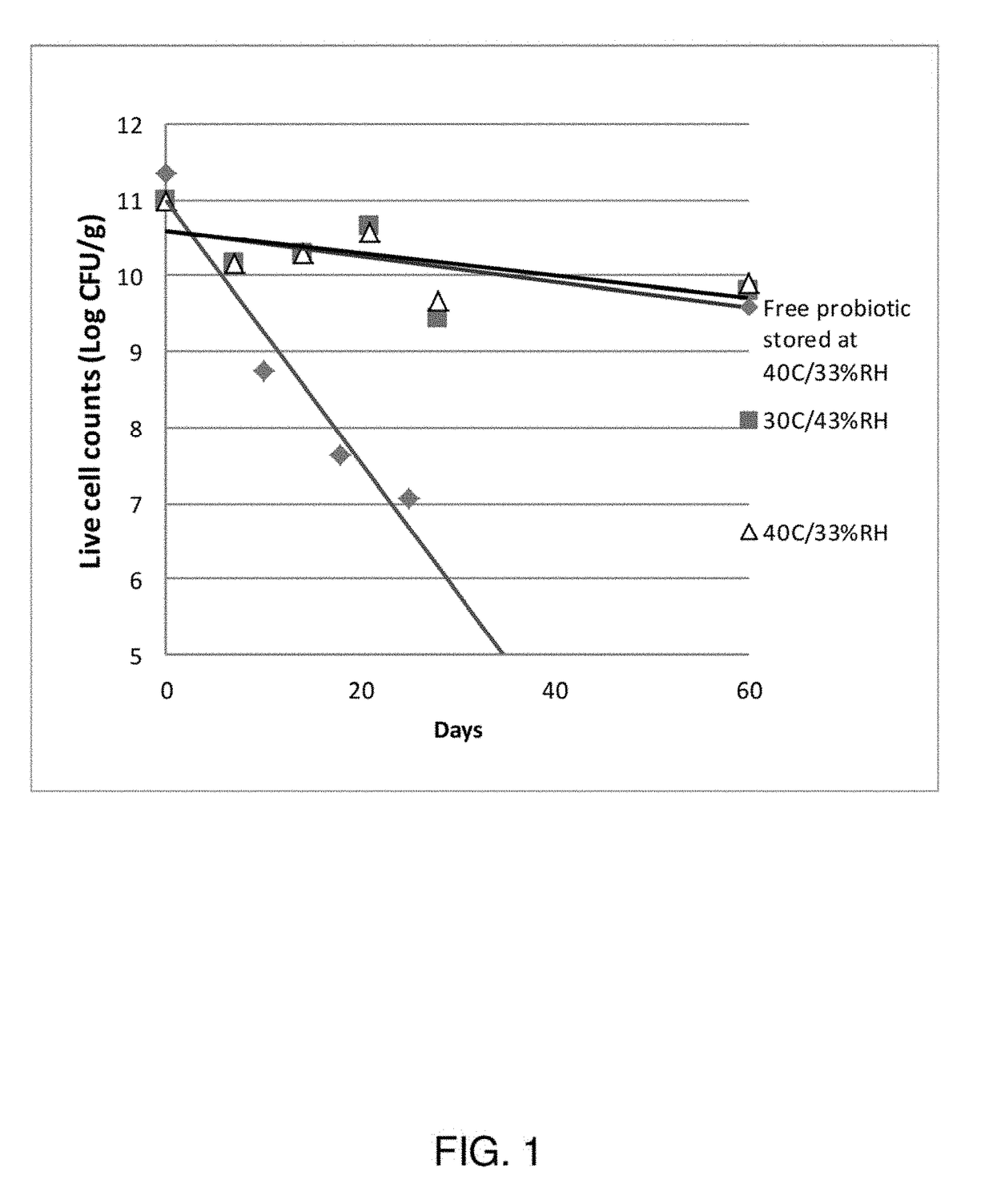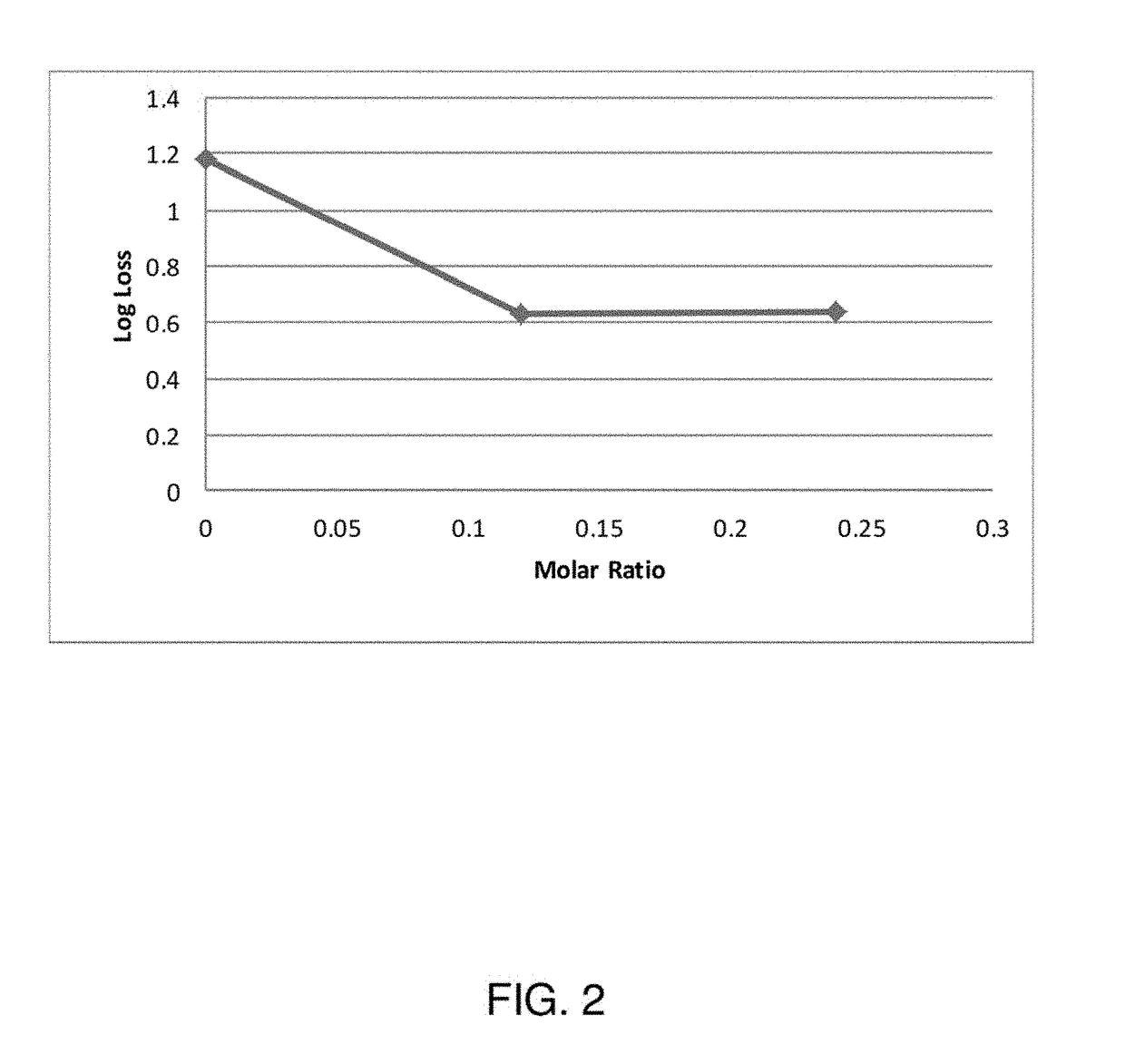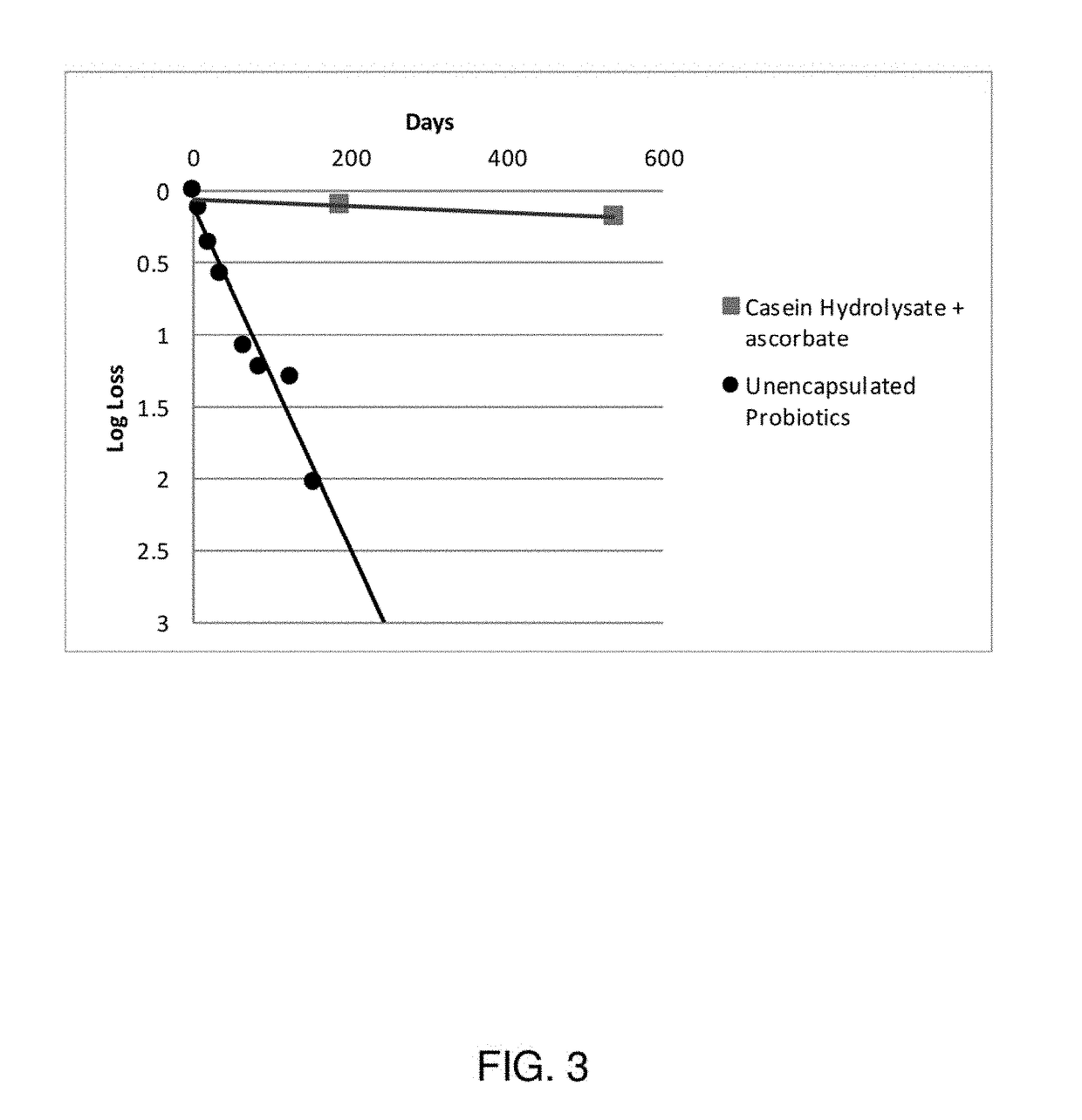Stabilizing methods for coating seeds with biological materials
a technology of biological materials and stabilizing methods, which is applied in the direction of pectin coatings, protein coatings, chitin coatings, etc., can solve the problems of inability to adapt to sensitive bioactives, live or attenuated bacteria, fungi and viruses, and the step of this process can have undesirable effects
- Summary
- Abstract
- Description
- Claims
- Application Information
AI Technical Summary
Benefits of technology
Problems solved by technology
Method used
Image
Examples
example 1
on of a Dry and Stable Composition
[0145]Basic carbohydrates mixture. About 70 g of trehalose (Cargill Minneapolis, Minn.), about 5 g of instant Inulin (Cargill Minneapolis, Minn.) and about 3 g of sodium alginate (ISP Corp., Wayne, N.J.) were uniformly mixed in dry form.
[0146]Basic glass enhancers mixture. About 17 g of casein hydrolysate or pea hydrolysate (ultra filtrated hydrolysates, Marcor, Carlstadt, N.J.) and 5 g of sodium citrate or sodium ascorbate (Sigma, St. Louis, Mo.) were uniformly mixed in dry form.
[0147]Stabilization of probiotic bacteria. Fresh concentrate of Lactobacillus rhamnosus. (100 ml at 10% solids, direct from fermentation harvest) was added in a blender and maintained at 35° C. About 78 g of basic carbohydrates mixture and about 22 g of the basic glass enhancer mixture were slowly added to the probiotic culture and mixing was carried out at 35° C. for 10 minutes. The viscous slurry was then transferred to a vessel having a perforated bottom and allowed drip...
example 2
tability of the Dry Probiotic Bacteria
[0149]FIG. 1 shows the storage stability under two different accelerated storage conditions of 40° C. and 33% RH and 30° C. and 43% RH of dry stable probiotic bacteria from Example 1 and commercially available dry probiotic bacteria (Culturelle, Amerifit, Inc., Cromwell, Conn.). The commercial probiotic bacteria completely lost its viability within the first few weeks under the accelerated storage conditions, while the dry composition of the probiotic bacteria of the present invention lost only 1.18 logs after 60 days at 30° C. and 43% RH and only 1.09 logs at 40° C. and 33% RH.
Example 3. Scale-Up Production of Stable Dry Composition Containing Probiotic Bacteria Lactobacillus rhamnosus
[0150]Lactobacillus rhamnosus (400 g frozen concentrate from a commercial source) was thawed at 37° C. in a jacketed dual planetary mixer (DPM, 1 qt, Ross Engineering, Inc., Savannah, Ga.,) and the solid content adjusted to 10% solids wt with distilled water). Ab...
example 6
ion of the Molar Ratio Between the Glass Enhancers and Carbohydrates Mixture
[0155]Several compositions containing various molar proportions of glass enhancers and carbohydrates mixture were prepared according to Example 1. A concentrated culture of the probiotic bacteria L. paracasei was obtained from a commercial source and prepared in a dry composition as described in Example 1 except that the slurry was immediately loaded on trays in wet form without snap-freezing and purging steps. The slurry was dried in primary and secondary stages as described in Examples 1 and 3 except that the shelf temperature was raised to 40° C. during primary and secondary drying stages. The stable powder was subjected to acceleration storage conditions at 37° C. and 33% RH for 84 days. FIG. 2 shows the effect of various molar ratios on the stability of the dried bacteria. Results suggested that optimal molar ratio between the glass enhancers and the carbohydrates mixture is about 0.12-0.15.
Example 7. E...
PUM
| Property | Measurement | Unit |
|---|---|---|
| water activity | aaaaa | aaaaa |
| temperature | aaaaa | aaaaa |
| temperature | aaaaa | aaaaa |
Abstract
Description
Claims
Application Information
 Login to View More
Login to View More - R&D
- Intellectual Property
- Life Sciences
- Materials
- Tech Scout
- Unparalleled Data Quality
- Higher Quality Content
- 60% Fewer Hallucinations
Browse by: Latest US Patents, China's latest patents, Technical Efficacy Thesaurus, Application Domain, Technology Topic, Popular Technical Reports.
© 2025 PatSnap. All rights reserved.Legal|Privacy policy|Modern Slavery Act Transparency Statement|Sitemap|About US| Contact US: help@patsnap.com



